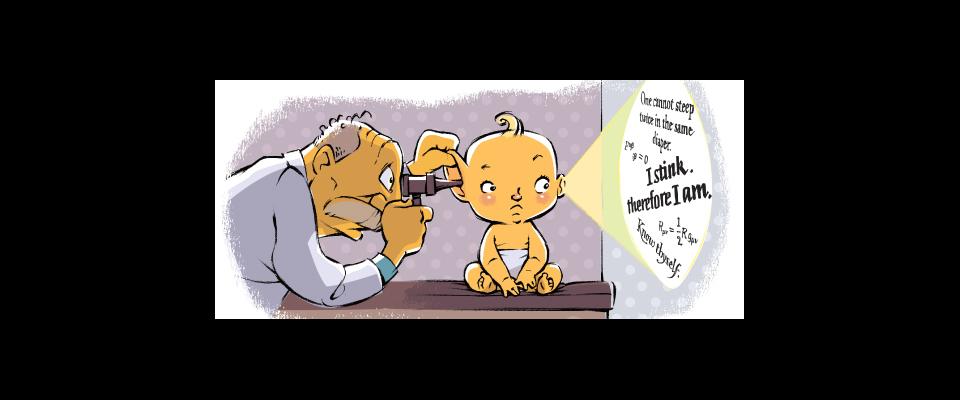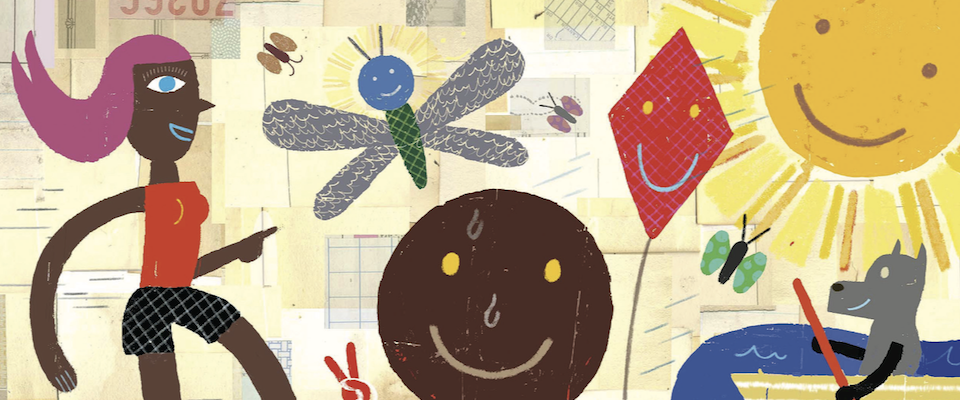Alison Gopnik on the infant mind and what it teaches us
In her latest book, The Philosophical Baby: What Children’s Minds Tell Us About Truth, Love, and the Meaning of Life, Berkeley psychologist and philosopher Alison Gopnik explores our growing understanding of cognitive processes in infants and explains how the capacity of a baby’s brain to analyze information and form coherent theories make it the world’s most powerful supercomputer. What’s more, she argues, by understanding how babies think, we may finally solve a puzzle that has vexed philosophers for millennia: How do we know what we know? Gopnik recently spoke with California magazine about her research and her new book.
California magazine: In The Philosophical Baby, you note that in 2,000 years of philosophy, children are hardly mentioned. What explains that neglect?
Alison Gopnik: Well, there’s a pretty obvious answer, which is that most of the people who were taking care of children were women, and most of the people who were writing philosophy were men. I think that’s sort of obvious but not trivial. I also think in general children are so familiar that we don’t really pay attention to what they are doing. And for a very long time, the picture of babies and young children was that they were defective grownups; they were defined by all the things that we could do that they couldn’t do. They were irrational, egocentric, and illogical. And I think part of what has happened is that over the last 30 years we have these new, scientific tools that have let us study children. Once we could actually start asking the questions scientifically, we found that in fact young children know more, feel more, and experience more than we ever thought possible.
What sorts of new tools are we talking about?
Probably the most important new tool for us was videotape, which we hardly think of as being new now at all, but it’s no coincidence that this big explosion of research came when we started to record what children were doing. If you just look at a baby it’s hard to see any coherent behavior, and we can’t give babies questionnaires or interview them. By using videotape we could look at what children did over and over again and use that information objectively to try to figure out what it was they were thinking. That was especially true with young babies. I think the other thing that we realized is that even though children are not terribly good at spontaneously telling us what they’re thinking, if you are clever about asking questions the right way and giving them problems the right way, you can actually find out quite a lot about what they think.
Have you ever experimented on your own children?
I was in grad school when my very first child was born and I thought, “Oh, I’m going to keep very careful records and a journal.” That lasted for about five minutes. Then I just got too caught up in the actual process of parenting, so I never did anything very systematic.
One of the things that I’ve always thought just from spending so much time with children, looking at their faces, and interacting with them, is that they are more vividly conscious than we are. For a long time I thought, “Well that’s something I feel, but it’s not something I can ever scientifically prove.” How can you prove what it’s like to be a baby? With the new neuroscience evidence and ingenuity in looking at what we know about children, I think I actually proved that they are more conscious than we are. As a philosopher, that made me feel happy—to take something that I feel intuitively, and I think a lot of people who hang out with babies feel intuitively, and to try to show some scientific basis for it.
In your book, you write about causal maps. What are they and what do they tell us about the process of thinking?
We know that many parts of the brain encode representations of the world. The visual system, for instance, has maps of the spatial array of objects out in the world, and we know that some parts o the brain, like the hippocampus in rats, have maps of the environment in which the rat finds itself. We don’t know which part of the brain gets the causal maps, though we’re starting to get ideas. But the important part is that we know that the brain can do the math that you need to have a causal map and can make predictions based on them.
In terms of my own research and my research at Berkeley, the causal maps are really the most important thing that has happened in cognition in quite a while. It’s not just me—there are other Berkeley faculty who are working in this area, and it’s just incredibly exciting. I think it’s fair to say that in this work in causal maps and Bayesian reasoning in general, Berkeley is probably the best place in the world. So we can be quite proud of the fact that Berkeley’s absolutely at the cutting edge of making this real revolution in the way we think about the mind and cognitive science.
How does this tie in to philosophy?
For a long time there was this puzzle about how it was possible for any system, human or computer, to actually learn about the world around it. What we’ve been discovering over the past 10 or 15 years is that computational mechanisms allow the system to learn really abstract things about the world by looking at the evidence that the world provides, particularly statistical evidence. And I think it’s fair to say it has been the biggest new development in cognitive science in the last 20 years.
What we want to do as cognitive scientists is figure out what exactly are the programs that those neural computers are running. And we’re actually starting to figure that out for this very particular, powerful, mysterious capacity, in which all we get from the world are these tiny little streams of light at our eyeballs and vibrations of air at our eardrums, and yet somehow from that we can figure out that the world is full of people and things and ideas, not to mention quarks and leptons and all the rest of it. We’re actually starting to understand how it’s possible for us to figure out how the world works, and that’s an incredibly exciting development. And I’m sort of morally pleased that it turns out that these 3- and 4-year-olds who have been dissed in philosophy for all these years are turning out to be at the core of the solution to this big giant philosophical problem.





















